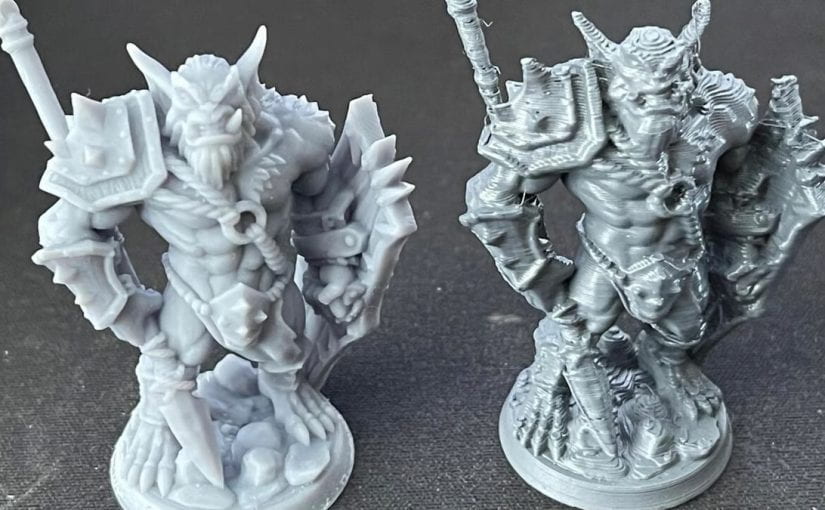In the rapidly evolving world of 3D printing, two major technologies have emerged as the frontrunners: Fused Deposition Modeling (FDM) and Resin-based 3D printing. These two techniques have their own distinct advantages and limitations, catering to different needs within various industries. As the 3D printing landscape continues to expand, understanding the differences and nuances between FDM and Resin 3D printers becomes crucial, especially when considering innovative companies like Sculptoris that push the boundaries of what’s possible.
Introduction to FDM and Resin 3D Printing
Fused Deposition Modeling (FDM) and Resin-based 3D printing are both additive manufacturing processes that transform digital designs into physical objects layer by layer. However, the underlying technologies and materials they utilize are fundamentally different, resulting in diverse applications and outcomes.
FDM: Building Layer by Layer with Thermoplastics
Fused Deposition Modeling (FDM), often referred to as Fused Filament Fabrication (FFF), is one of the most widely adopted 3D printing technologies. It operates by extruding thermoplastic filament through a heated nozzle onto a build platform. The nozzle moves in various directions, depositing the material layer by layer to create the final object.
The key advantages of FDM lie in its accessibility, affordability, and versatility. FDM printers are relatively inexpensive and can accommodate a wide range of thermoplastics, allowing users to choose materials that suit their specific requirements. This makes FDM an attractive option for hobbyists, educators, and small-scale manufacturers. However, FDM-printed objects might exhibit visible layer lines and lower resolution compared to other technologies.
Resin-based 3D Printing: Photopolymers at Work
Resin-based 3D printing encompasses techniques like Stereolithography (SLA) and Digital Light Processing (DLP). These methods utilize liquid photopolymers that solidify under the influence of ultraviolet (UV) light. The process involves projecting UV light onto the liquid resin, causing it to solidify layer by layer.
Resin 3D printers excel in producing intricate, high-resolution objects with smooth surfaces. This makes them ideal for applications where fine details matter, such as jewelry design, dental models, and architectural prototypes. The ability to achieve exceptional accuracy and surface finish, coupled with the availability of various resin formulations, grants these printers a place in industries demanding precision.
Sculptoris Innovation: Pushing the Boundaries
Sculptoris innovative player in the 3D printing arena has been at the forefront of utilizing both FDM and Resin 3D printing technologies to their maximum potential. By understanding the strengths of each method, Sculptoris has managed to tap into diverse markets and cater to a wide range of customer needs.
For functional prototypes and mechanical parts, Sculptoris has harnessed the affordability and robustness of FDM. This approach suits industries where the mechanical properties of the final product take precedence over surface finish, such as engineering and product design. By leveraging FDM’s capability to print with durable materials like ABS and PETG, Sculptoris ensures that its clients receive prototypes that not only look the part but also perform as intended.
On the other hand, Sculptoris has also ventured into the realm of high-detail, precision-critical projects by utilizing Resin-based 3D printing. Jewelry designers collaborating with Sculptoris benefit from the ability to create intricate pieces that capture every delicate nuance. The smooth surfaces achievable through resin printing align perfectly with the aesthetic requirements of this industry.
The Showdown: FDM vs. Resin 3D Printing
The choice between FDM and Resin 3D printing depends on the specific needs of the project. Here’s a comparative breakdown of their key features:
- Materials: FDM offers a wider range of thermoplastic materials, including PLA, ABS, PETG, and more. Resin 3D printing utilizes liquid photopolymers, which come in various formulations catering to specific applications.
- Surface Finish: Resin-based prints typically have a smoother surface finish with minimal visible layer lines, while FDM prints might exhibit more pronounced layering.
- Precision: Resin 3D printing achieves higher levels of precision and detail, making it suitable for projects where accuracy is paramount.
- Mechanical Properties: FDM-printed parts can possess good mechanical strength, depending on the material used. Resin prints, while accurate, might not be as mechanically robust as FDM parts.
- Speed: FDM is generally faster than Resin printing due to its layer-by-layer extrusion process, but some Resin printers offer high-speed modes.
- Post-Processing: FDM prints might require more post-processing, such as sanding and smoothing, to achieve a desired finish. Resin prints often require post-curing to ensure they achieve their intended mechanical properties.
Conclusion
In the ongoing battle between FDM and Resin 3D printing, there’s no clear winner. Instead, each technology has found its own niche within various industries. Companies like Sculptoris exemplify the power of understanding these technologies’ strengths and strategically implementing them to meet diverse customer needs.
As the 3D printing landscape continues to evolve, it’s not a matter of choosing one technology over the other, but rather embracing both and leveraging their unique capabilities. Whether it’s producing functional prototypes with FDM’s mechanical strength or crafting intricate jewelry designs with Resin’s precision, the synergy between these technologies pushes the boundaries of what’s achievable in the realm of 3D printing.
